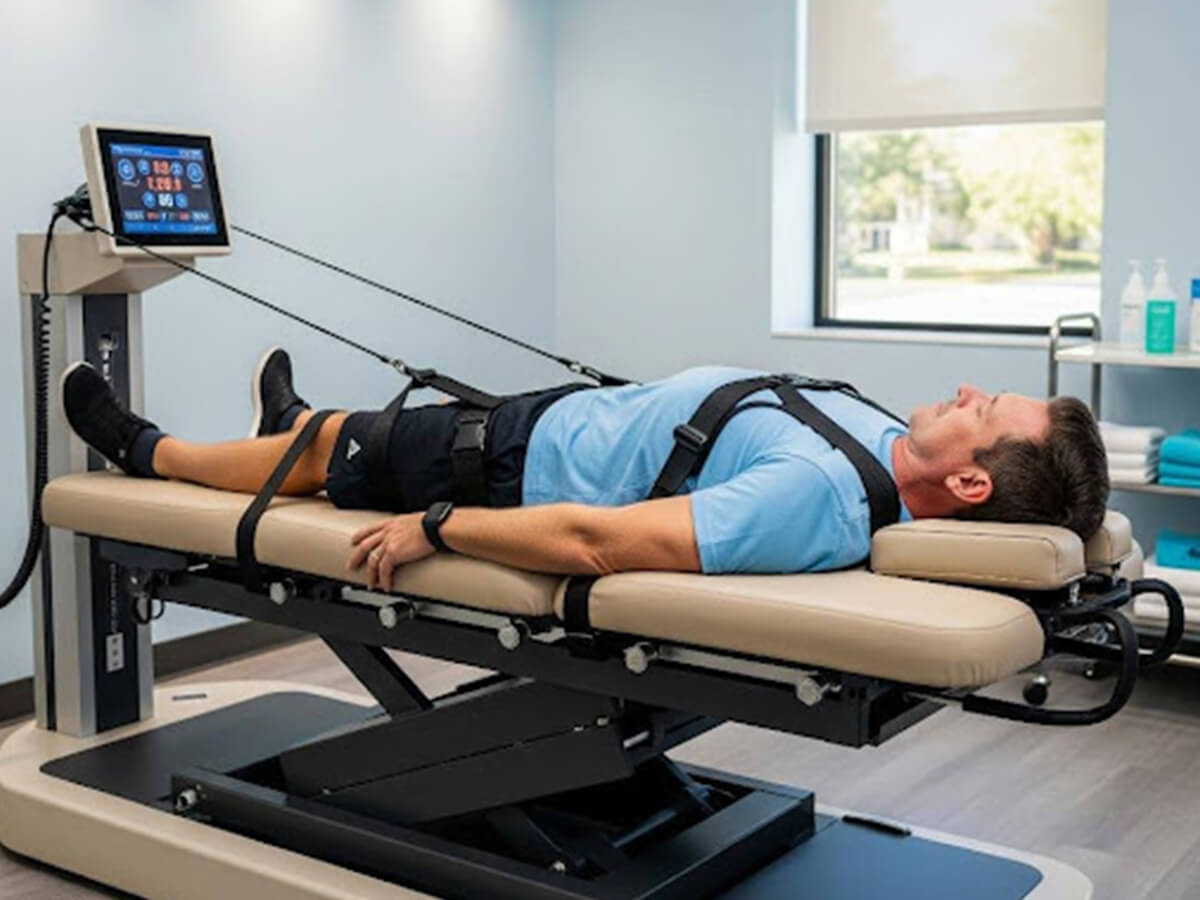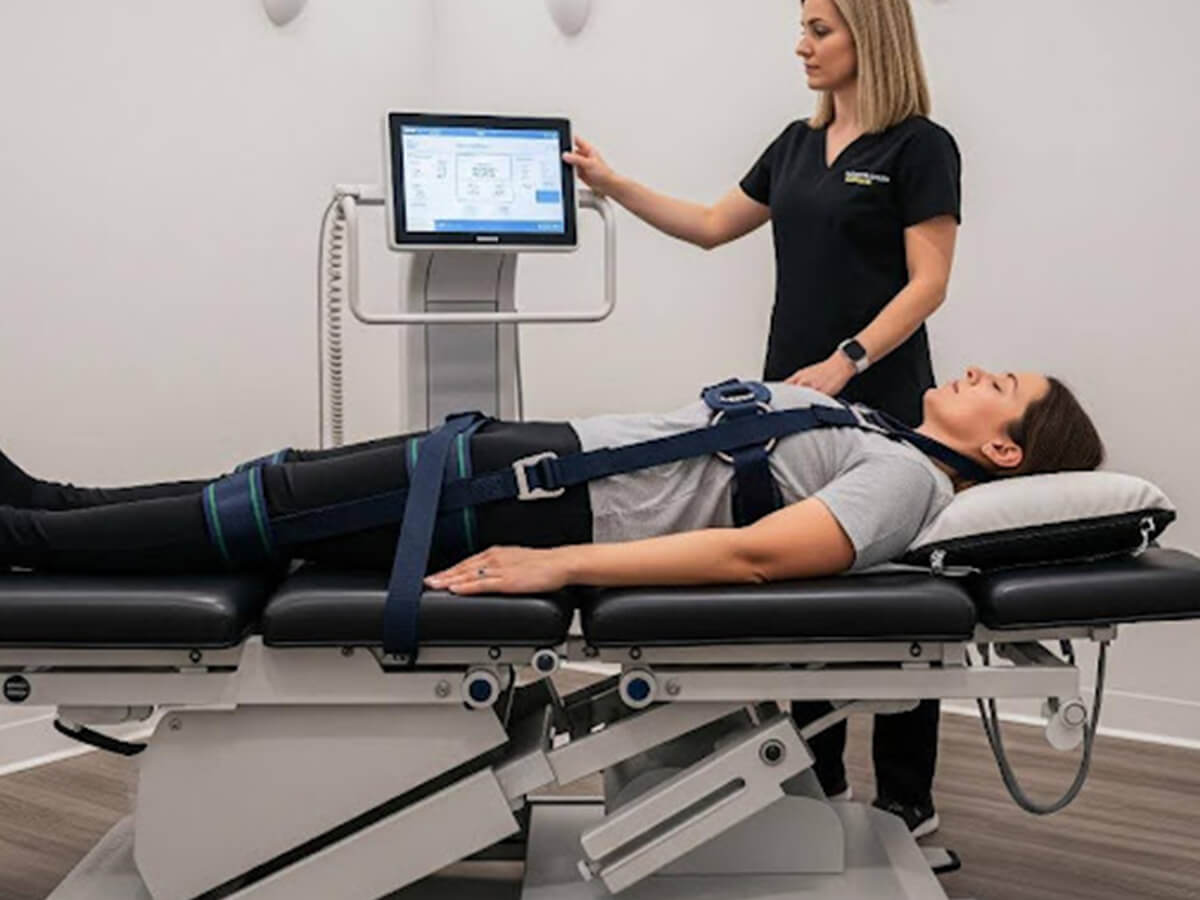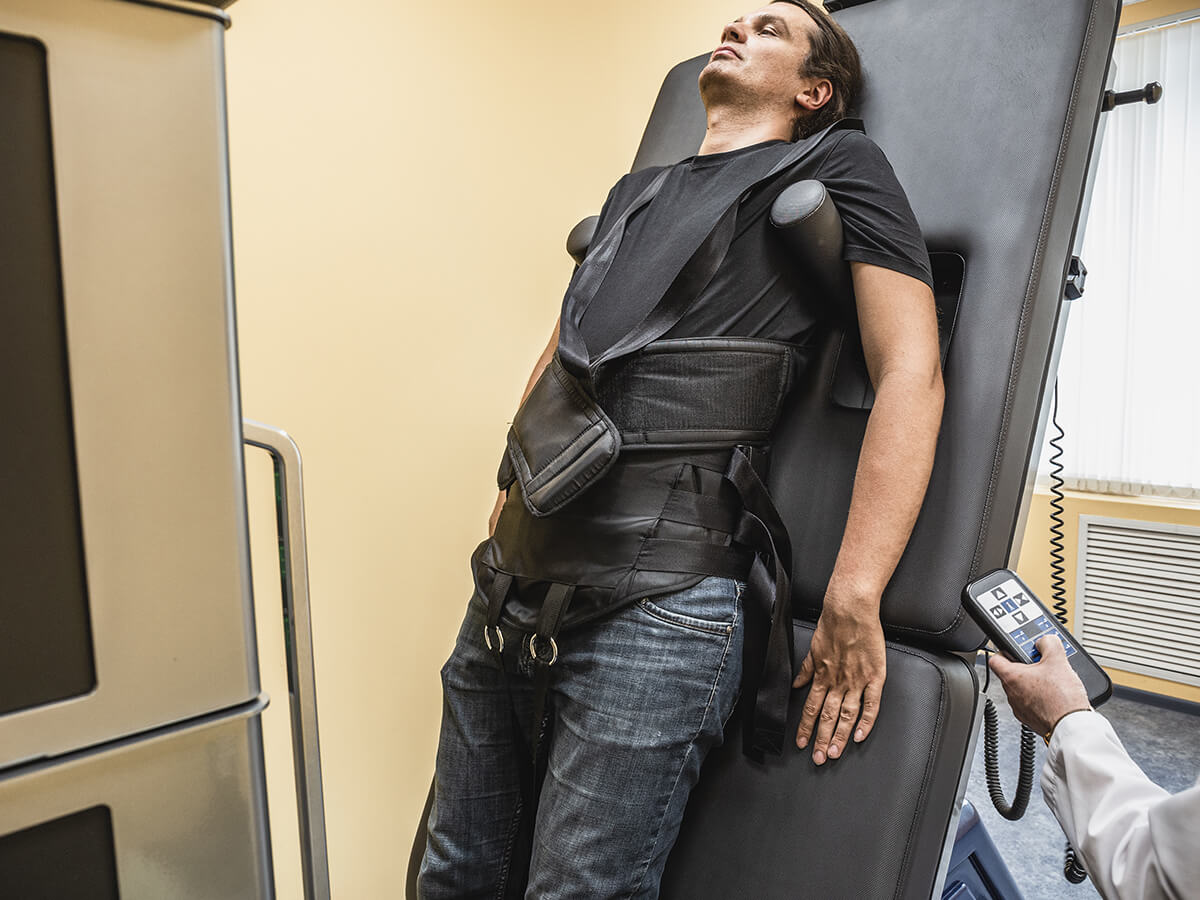How Safe Is Spinal Decompression Therapy?
Back and neck pain are issues that many people deal with at some point in life. These conditions can disrupt daily routines and make even simple tasks harder to manage. As patients look for relief that doesn’t involve surgery or heavy medication, spinal decompression therapy has gained attention. However, one question often comes up: how safe is it?
Understanding the safety of this therapy requires more than a yes-or-no answer. It depends on several factors, including your condition, the provider’s experience, and how the treatment is administered.
What Is Spinal Decompression Therapy?
To understand the safety of spinal decompression, you first need to know what it actually involves. This therapy uses a traction-based device that gently stretches the spine in a controlled manner. By slowly separating the vertebrae, the pressure inside spinal discs is reduced, which may allow bulging or herniated discs to retract.
This mechanical movement improves blood flow to the affected area, promoting the delivery of nutrients to help damaged tissues recover. It’s a non-invasive process done over several sessions and is generally painless. People often use this approach for conditions like herniated discs, sciatica, spinal stenosis, and chronic back pain.
Because non surgical spinal decompression doesn’t require incisions or injections, it’s often chosen over more invasive methods. While it’s not a miracle cure, many patients report reduced pain and improved mobility after completing a full treatment cycle.
Why More People Are Choosing Spinal Decompression

People who have tried physiotherapy, medications, or chiropractic adjustments without success often start searching for new answers. In that search, many land on decompression therapy. What draws them in is the promise of relief without the risks or recovery time that come with surgery.
For individuals managing long-standing back or neck pain, this option offers hope. The gentle, hands-off nature of the treatment makes it accessible for a wide age range. Even those who are cautious about spine-related interventions find themselves typing “spinal decompression near me” into search engines after learning how it works.
Additionally, it’s common to combine decompression with other treatments like exercise or manual therapy. This blended approach allows for more targeted care while minimizing dependency on any one method.
Is Spinal Decompression Considered Safe?
When done correctly, spinal decompression is considered safe for most people. The equipment is regulated and designed to adjust automatically based on patient feedback. These safety systems help control the pull force, ensuring that the spine is never under too much stress.
The therapy is also administered in a professional setting, usually by a physiotherapist or chiropractor with professional training. This supervision ensures proper alignment and helps avoid complications. Minor side effects like soreness or stiffness are common after the first few sessions, but these are usually short-lived and manageable.
Compared to spinal surgery—which carries risks like infection, bleeding, or nerve damage—spinal decompression treatment is far less invasive. There’s no need for anaesthesia, and there’s virtually no downtime. This makes it a practical option for people who want to maintain their normal routines.
When You Should Avoid This Therapy

While many patients benefit from decompression, it isn’t appropriate for everyone. There are certain medical conditions where this therapy can do more harm than good. That’s why a full health assessment is mandatory before starting treatment.
For example, individuals with advanced osteoporosis have fragile bones that could fracture under pressure. Those with spinal fractures, tumours, or infections should not undergo this therapy either. Pregnant patients are also advised against it due to pressure on the abdomen.
People with spinal implants or artificial discs may also be excluded from treatment depending on their specific condition. It’s important to disclose all health history so your provider can assess whether spinal decompression is suitable for your body and needs.
Understanding the Risks and Side Effects
Although generally safe, this therapy isn’t completely without risks. It’s essential to be aware of what could go wrong—even if it’s rare—so you can make an informed decision.
1. Mild Soreness or Muscle Spasms
It’s common to feel some soreness, stiffness, or muscle tightness after your first few sessions. This happens because your muscles are responding to the stretching motion. The discomfort usually fades within a day or two. Staying hydrated and lightly stretching after treatment can ease these symptoms.
2. Worsening Pain if Done Incorrectly
If the table is not set correctly or the force is too high, the therapy could strain your spine instead of helping it. This is why it’s important to work with experienced providers who regularly perform this therapy. When done correctly, these issues are rare.
3. Delay in Proper Diagnosis
Sometimes the concern isn’t the treatment itself, but the condition being misdiagnosed. For example, if your pain stems from something that doesn’t involve disc compression, decompression might not help. A lack of improvement could mean it’s time to reassess the root issue.
By choosing a reputable clinic and openly communicating any side effects, these risks can be reduced or completely avoided.

